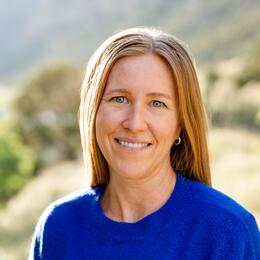**Este artículo se puede encontrar en español**
We face two interrelated threats requiring urgent action: addressing climate change and biodiversity loss. Despite a narrative that sometimes pits renewable energy and wildlife conservation interests against one another, it is not only possible but imperative to solve these two issues in tandem at the policy and the project level.
Audubon’s Survival by Degrees Report found that around 61 percent of bird species in North America are at risk of extinction by the end of the century under a 3 degree climate warming scenario—with birds like Clark’s Nutcracker, Montezuma Quail, and Eared Grebes highly vulnerable in Arizona. The climate crisis demands we build out our renewable energy infrastructure at an industrial scale if we are going to reduce our carbon emissions to the point where the worst effects of climate change are avoided. The global biodiversity crisis demands we restore, improve, and protect habitat for wildlife around the globe at the landscape scale if we are going to stop extinction (which is currently happening at a rate not seen since the end of the dinosaurs).
How do we build the infrastructure needed to transition away from a carbon-based energy economy while also creating new habitat for wildlife (or at least protecting what we still have)? The best solutions need to address climate, wildlife, and habitat conservation—while engaging impacted communities.
And Arizona and the Southwest are at the epicenter.
At the National Audubon Society, and within our regional office at Audubon Southwest, we are leaning into this necessary work. With the 2023 release of our Birds and Transmission Report, our support for the Sunzia Transmission Line, and our contributions to the Bureau of Land Management’s Western Solar Plan, we recognize there must be a balance in developing renewable energy and transmission and promoting wildlife conservation. If more renewable and transmission projects can be proactive and consider the needs of wildlife and communities, we believe they can be deployed quicker and more responsibly.
With this approach we are rejecting the notion that we are pitted in a zero-sum game between renewable energy and wildlife habitat. We believe that by utilizing the best science, conducting high-level diplomacy with industry, and engaging in siting and permitting processes across various jurisdictions (federal, state, county, local), we can build out the needed renewable energy capacity while still conserving and even improving habitat. Audubon works at multiple levels to influence permitting processes, siting decisions, and mitigation plans to achieve the best outcomes for birds and people.
That is why we are eager to share our new publication, Conservation Priorities for Renewable Energy and Transmission in Arizona: Incorporating Wildlife and Community Considerations into Project Siting and Design. Developed in partnership with conservation groups across Arizona, this resource offers ideas for renewable energy and transmission projects to be more compatible with wildlife and community needs.
In addition to these conservation priorities that we would like developers to consider when siting, designing, and implementing utility-scale renewable and transmission projects, we also support rooftop solar, home battery storage, and energy efficiency and conservation. Furthermore, we believe that existing transmission lines should be operated in a way that maximizes existing capacity and ensures existing lines are fully utilized (to determine if new transmission lines are needed).
Audubon Southwest will continue to monitor and engage in the renewable energy, transmission, and wildlife conservation arena to improve the outcomes for birds and people and to help advance the clean energy transition we need. We will also ask for your help. If you are interested in receiving news and opportunities to engage in these processes, make sure you are signed up for Audubon Southwest news and action alerts.
Jon Hayes contributed to this article.







